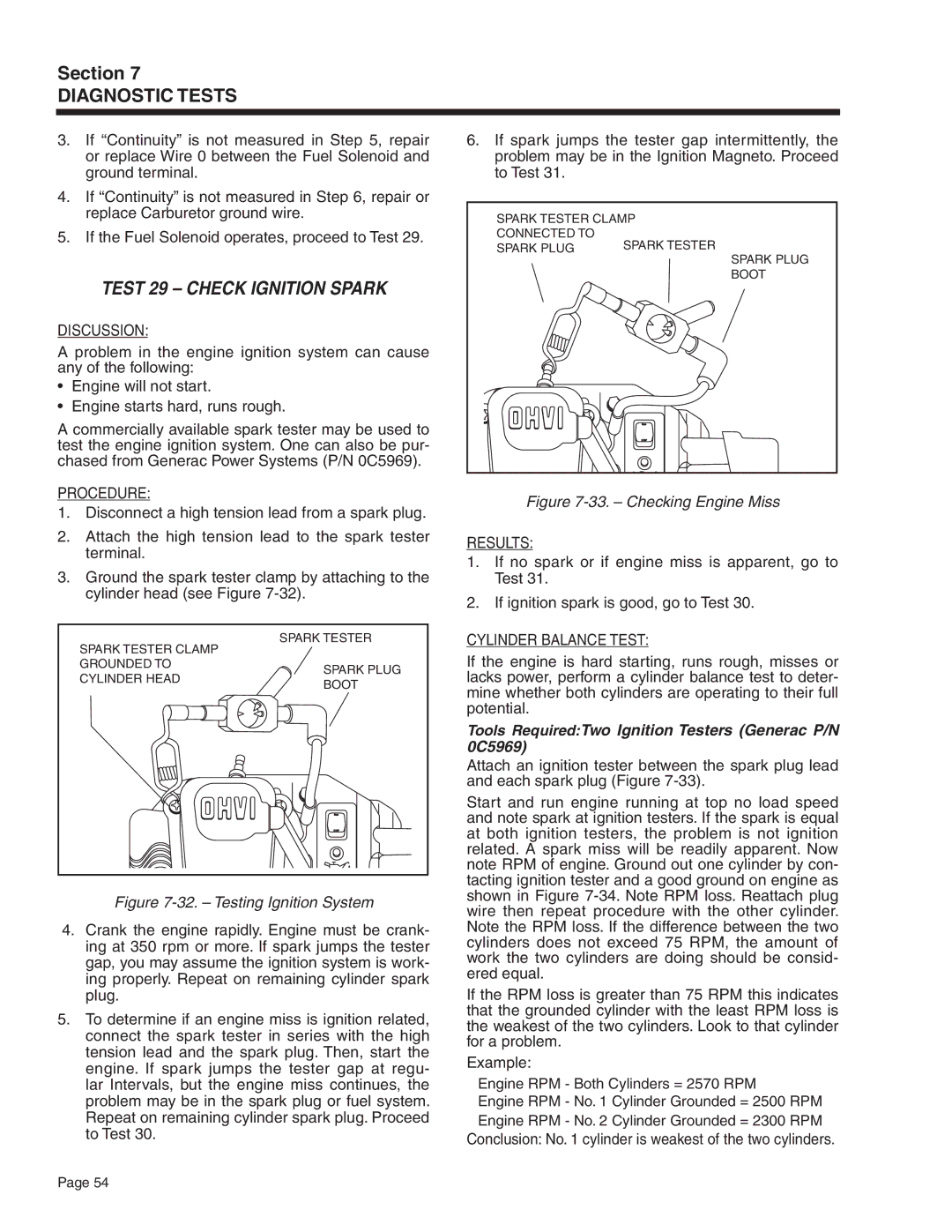5410, 5414, 5415, 5413, 5411 specifications
Generac Power Systems has established itself as a leading manufacturer of backup power solutions, particularly known for its range of generators designed for both residential and commercial use. Among their noteworthy products are the Generac models 5412, 5411, 5413, 5415, and 5414. Each of these generators showcases innovative technologies and features that enhance reliability, efficiency, and ease of use.The Generac 5412 is a versatile model equipped with a robust 10 kW output, making it suitable for powering essential home appliances during outages. It operates using a 1.0 L engine that runs on natural gas or propane, providing flexibility in fuel options. The Quiet-Test feature is a notable characteristic, as it allows for a self-test at a reduced volume, minimizing noise disruptions during routine checks.
Moving to the Generac 5411, this generator offers a higher output capacity of 13 kW. It integrates advanced load management technology, which ensures that power is allocated efficiently among connected devices. This model also features a Mobile Link remote monitoring system, enabling users to check generator status and performance from anywhere via a smartphone app.
The Generac 5413 is tailored for larger residential needs, delivering an impressive 16 kW output. It boasts a durable all-weather aluminum enclosure designed for longevity against the elements. The 5413's integrated wifi connectivity allows for real-time monitoring and alerts, ensuring that homeowners are always informed of their generator's operating status.
For those seeking a balance of power and efficiency, the Generac 5415 offers 20 kW of output while maintaining a compact design. This model is enriched with the patented G-Flex technology, allowing it to adjust engine speed based on the load requirements, thereby conserving fuel and reducing noise levels. Additionally, the 5415 comes with an intuitive user interface for effortless operation and programming.
Finally, the Generac 5414 rounds out the lineup with its strong 24 kW capability. This model is particularly known for its Smart Management modules, which facilitate the safe and efficient distribution of power. Its intuitive design also includes a user-friendly control panel for straightforward operation, ensuring that homeowners, regardless of technical expertise, can utilize the system effectively.
In summary, Generac Power Systems’ 5412, 5411, 5413, 5415, and 5414 generators exemplify advanced power technology, tailored for reliability and user convenience. Whether for essential home functions or more extensive power needs, these models provide effective solutions to ensure that homes remain powered during outages.

